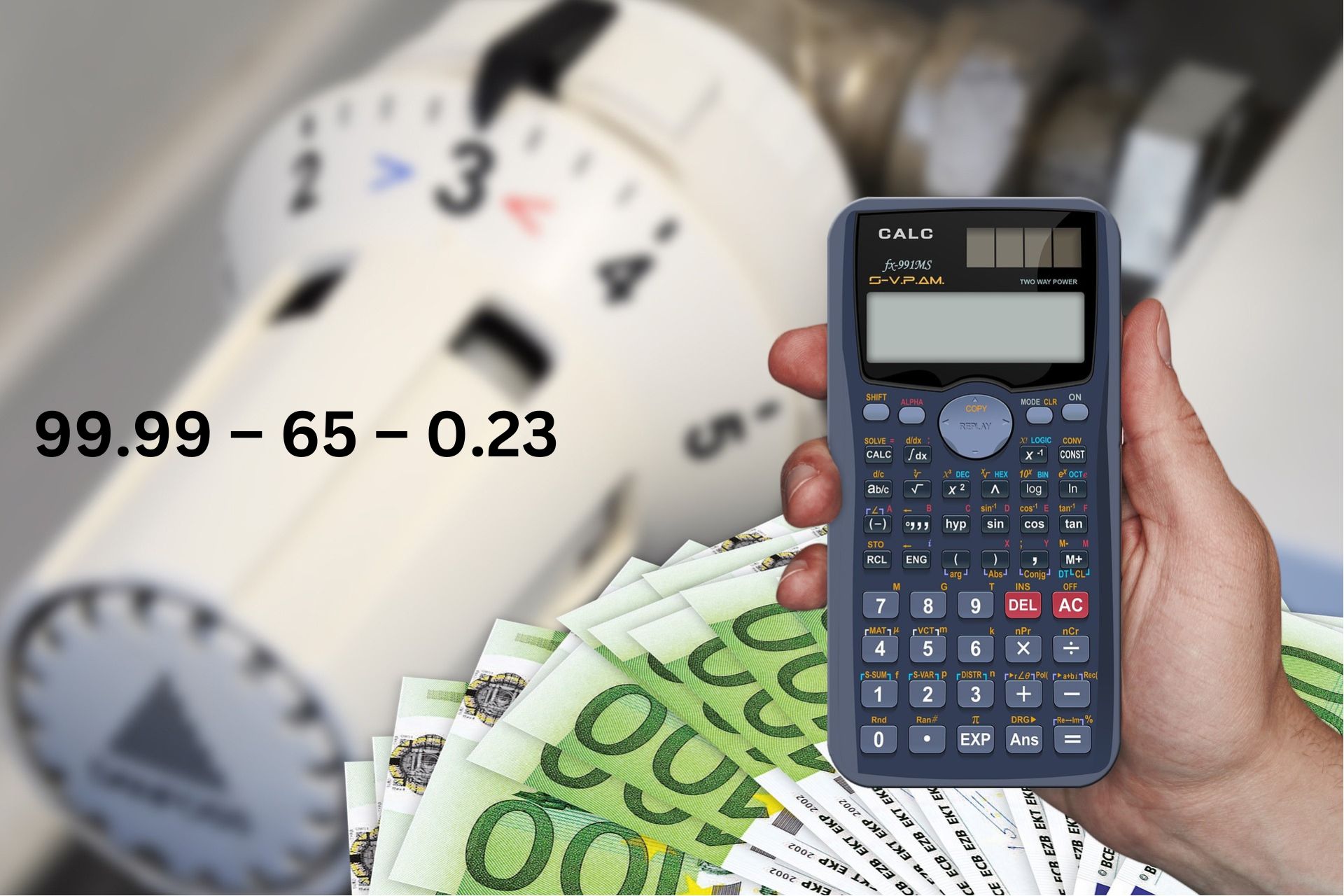Have you come across a calculation like (99.99 – 65 – 0.23) and wondered how it applies to everyday life? Though it seems like a simple math problem, this sequence of numbers and subtractions plays a surprisingly practical role in daily budgeting, discount calculation, and financial planning. In this article, we’ll delve into the many layers of this calculation, exploring how it can help you make more informed financial decisions, track expenses, and analyze data with ease.
Contents
- 1 What Does (99.99 – 65 – 0.23) Represent? A Closer Look at the Calculation
- 2 Real-Life Scenarios Where (99.99 – 65 – 0.23) Matters
- 3 The Role of Subtraction in Financial and Analytical Calculations
- 4 Practical Tips for Quick and Accurate Calculations Like (99.99 – 65 – 0.23)
- 5 Common Questions About (99.99 – 65 – 0.23)
- 5.1 1. Why is this calculation relevant in shopping?
- 5.2 2. How does this apply to financial planning?
- 5.3 3. Why does a small number like 0.23 make a difference?
- 5.4 4. What are other ways to simplify this calculation?
- 5.5 5. How do I avoid common mistakes in multi-step calculations?
- 5.6 6. Are there online tools that simplify calculations like this?
- 6 Conclusion: The Daily Value of (99.99 – 65 – 0.23)
What Does (99.99 – 65 – 0.23) Represent? A Closer Look at the Calculation
This equation isn’t just a random set of numbers—it mirrors many scenarios we encounter regularly. Here’s the breakdown:
- 99.99: Represents a standard price often found in retail. Items priced at 99.99 are familiar to consumers, making this a common starting point.
- 65: Often a significant discount or a primary expenditure. Subtracting 65 can represent a markdown or a large expense deducted from an original amount.
- 0.23: Though small, these fractional amounts can make a real difference, especially when calculating budgets or managing detailed data.
Together, these numbers take us through a practical math exercise that results in 34.76—a figure that could represent a final price, leftover budget, or data value. By understanding each part of this calculation, you can apply it to a variety of financial and analytical scenarios that impact your daily life.
Real-Life Scenarios Where (99.99 – 65 – 0.23) Matters
1. Shopping and Discounts: Mastering Step-by-Step Price Reductions
Imagine you’re purchasing an item priced at $99.99, and it’s on sale with a $65 markdown and an additional $0.23 discount applied. Here’s how this sequence unfolds:
- Initial Price: $99.99, a familiar starting price for various consumer goods, from clothing to electronics.
- First Deduction: Subtracting $65 reduces the price significantly to $34.99.
- Final Adjustment: Deducting $0.23 gives the final amount of $34.76.
Why This Matters: When shopping, knowing how to calculate price reductions precisely allows you to understand the final cost and verify each step. With this knowledge, you can accurately track discounts, ensure you’re receiving the full discount, and budget for purchases confidently.
2. Budgeting and Expense Tracking: Tracking Every Penny
Suppose you have a monthly entertainment budget of $99.99. After spending $65 on a concert ticket and $0.23 on a processing fee, you’re left with $34.76. Here’s how understanding this calculation can benefit you in budgeting:
- Budget Awareness: You’ll know exactly what’s been spent and what’s left, maintaining clear financial boundaries.
- Expense Precision: Each deduction—whether $65 for a primary purchase or $0.23 for an additional fee—affects the remaining budget.
Why This Matters: When managing a budget, every penny counts. By breaking down each deduction in your spending, you can track precisely where your money goes, helping to avoid overspending and keeping financial goals on target.
3. Data Analysis and Comparisons: Precision in Research and Trends
In data analysis, calculations similar to (99.99 – 65 – 0.23) are essential for revealing trends and differences. For example:
- Initial Data Point: 99.99 might represent a data figure in your research, such as a monthly sales total or data set value.
- Deduction for Changes: Subtracting 65 represents a significant fluctuation, such as a reduction in sales or a change in data trends.
- Fine-Tuning with 0.23: Finally, subtracting a small value like 0.23 ensures precision when capturing minor shifts in data.
Why This Matters: In data-heavy fields, accurate calculations are crucial for trend analysis, making minor adjustments like 0.23 significant. This precision helps in drawing reliable conclusions and improves decision-making based on data.
The Role of Subtraction in Financial and Analytical Calculations
Subtraction plays a central role in calculations because it reveals what remains after costs are deducted, providing clarity in various scenarios:
- Understanding Actual Costs: Subtraction shows the net amount after each expense, making it clear what’s affordable.
- Tracking Value Over Time: By repeatedly subtracting expenses or changes, you can track budget changes, allowing for informed financial decisions.
- Providing Exact Figures for Planning: Subtraction gives specific, manageable numbers that help with future planning and financial goal-setting.
Mastering the concept of calculations like (99.99 – 65 – 0.23) can help in managing budgets, analyzing data, and making efficient spending decisions.
Practical Tips for Quick and Accurate Calculations Like (99.99 – 65 – 0.23)
1. Rounding for Mental Calculations
In quick mental math, round numbers to simplify calculations:
- Example: Round 99.99 to 100 for a faster first step.
- Note: While this simplifies math, rounding may slightly alter the final outcome, so use this only for estimates.
2. Break It Down into Steps
For precise multi-step calculations, tackle each part of the equation separately:
- Step 1: 99.99 – 65 = 34.99.
- Step 2: 34.99 – 0.23 = 34.76.
Breaking down each subtraction ensures accuracy, especially with calculations that involve small figures like 0.23.
3. Use a Calculator for Exact Results
Calculators are helpful tools for maintaining accuracy:
- Avoid rounding errors: This is essential for exact budgeting or price comparisons.
- Focus on precise amounts: Calculators ensure you account for every dollar or cent.
Common Questions About (99.99 – 65 – 0.23)
1. Why is this calculation relevant in shopping?
In retail, discounts are often calculated similarly. Subtracting one discount at a time ensures you receive accurate price reductions, preventing any missed discounts.
2. How does this apply to financial planning?
Calculations like (99.99 – 65 – 0.23) allow you to deduct expenses from a budget with accuracy, so you always know your available funds.
3. Why does a small number like 0.23 make a difference?
In budgeting, every cent counts. Small figures like 0.23 add up over time, impacting overall budget balance and financial outcomes.
4. What are other ways to simplify this calculation?
For a rough estimate, round each number:
- 99.99 to 100 and 0.23 to 0. This isn’t exact but provides a quick ballpark figure.
5. How do I avoid common mistakes in multi-step calculations?
Writing down intermediate results (like 34.99) ensures you avoid errors in multi-step problems. Always review each step for accuracy.
6. Are there online tools that simplify calculations like this?
Yes, many budgeting apps and online calculators allow input of specific amounts, making complex calculations straightforward.
Conclusion: The Daily Value of (99.99 – 65 – 0.23)
Calculations like (99.99 – 65 – 0.23) aren’t just numbers; they’re tools that bring clarity to shopping, budgeting, and financial planning. Understanding each step reveals the power of precise calculations in tracking expenses, managing money, and making informed decisions. By mastering these simple equations, you can improve your financial insight and make smarter choices every day. Remember, the final outcome—34.76—may look small, but its impact is much larger.











